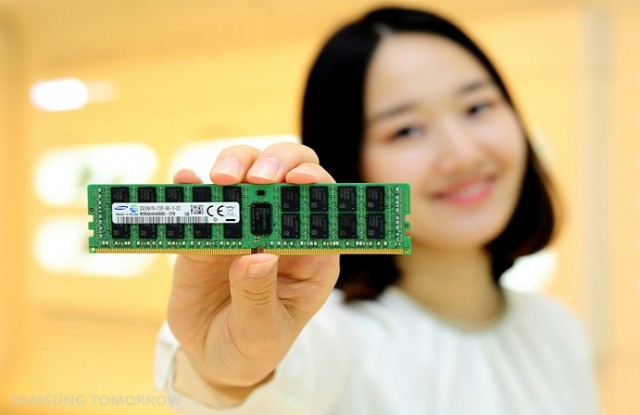Samsung is about to squeeze 128GB into a single DDR4 RAM module
Samsung Electronics is about to do it again, in the wake of its previous success in creating a single 64GB 3D TSV DDR4 module last year, with a 128GB DIMM, once again built for server applications.
According to Samsung, the upcoming module will feature the best energy efficiency, and highest capacity available. The new RAM will also allow for speeds up to 300MB per second, on next generation server machines.

Smaller form factors are becoming increasingly important, as the exponential demand for network resources, in both internal data centers, and web servers, is making a strong case for energy efficiency and heat dissipation.
The new module’s form factor is built using a master chip package originally created for 4GB chips, which gives it a rather inconspicuous appearance.
Consumer applications
While Samsung has stated that the company is working on bringing the same technology to consumers, the chances of seeing a laptop or 2-in-1 packing a full stack of 4 DIMMS, each one being 128GB of RAM, rounding up to a total of half Terabyte of memory, within the next year or two is very slim. This is not simply a matter of costs, but rather the fact that past a certain point, the amount of RAM, on any consumer device, becomes irrelevant, unless met with higher hardware resources capable of taking advantage of such amount of memory.
The closest any user would get to ever needing these types of modules would be in the realm of professional production workstations, for example in render farm applications used in CG production. These applications require both processing speed and vast amounts of memory, capable of handling large volumes of data, such as 4K video processing and motion graphics, at high speeds.
With that said, the average consumer won’t be left out of the loop, as well as the high-end enterprise worker, looking for reliable computing power for multimedia and productivity applications. The type of technology used in building the new chips is expected to have a positive impact on both performance and energy efficiency, especially when it comes to battery power. By this token, it would not be a wild expectation to see 16GB memory modules, which is quite sufficient for everyday computing, on both Windows 10 devices like Microsoft Surface Book, as well as future Apple Mac products, such as the next iteration of the 12 inch MacBook Retina.